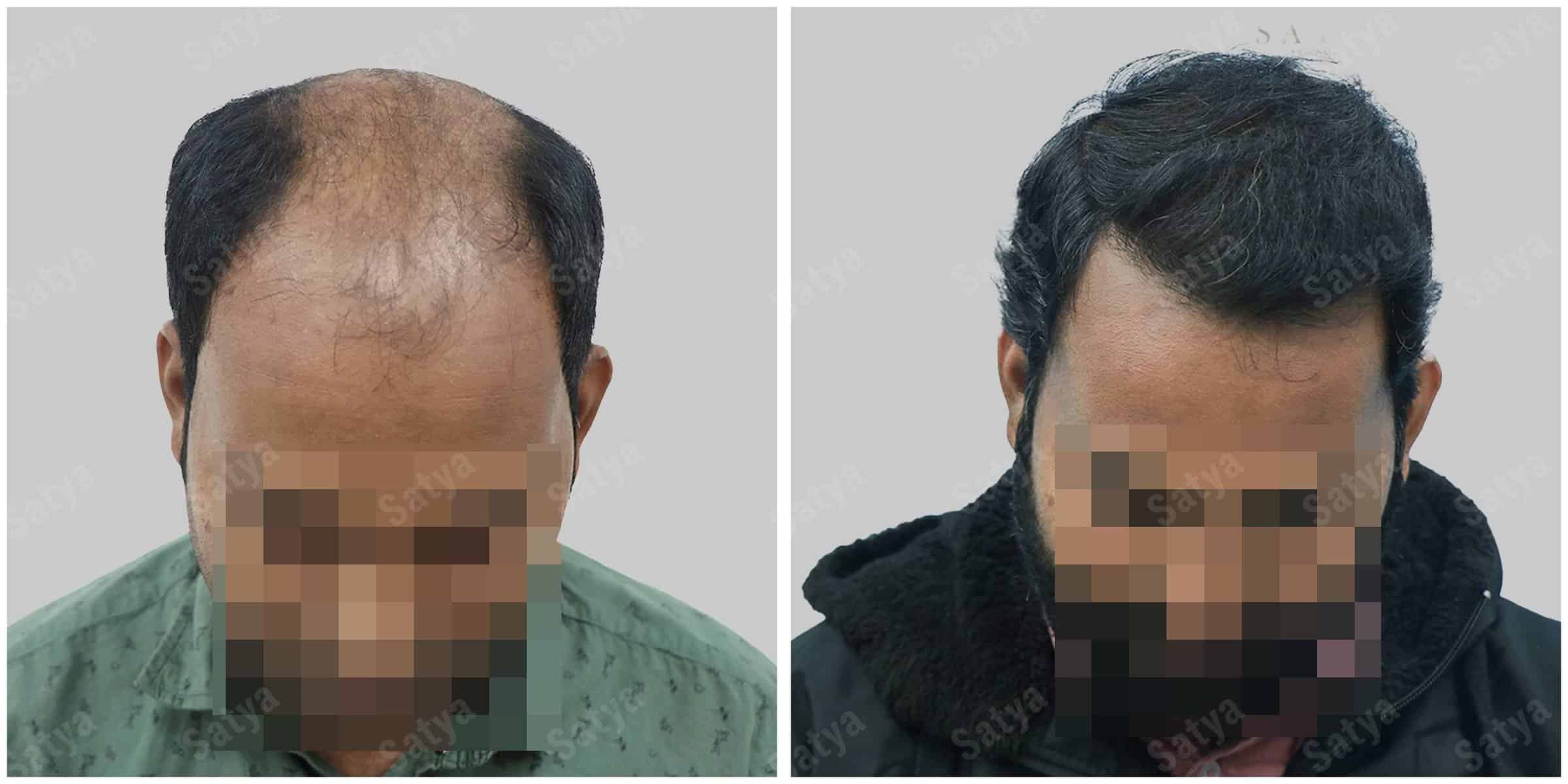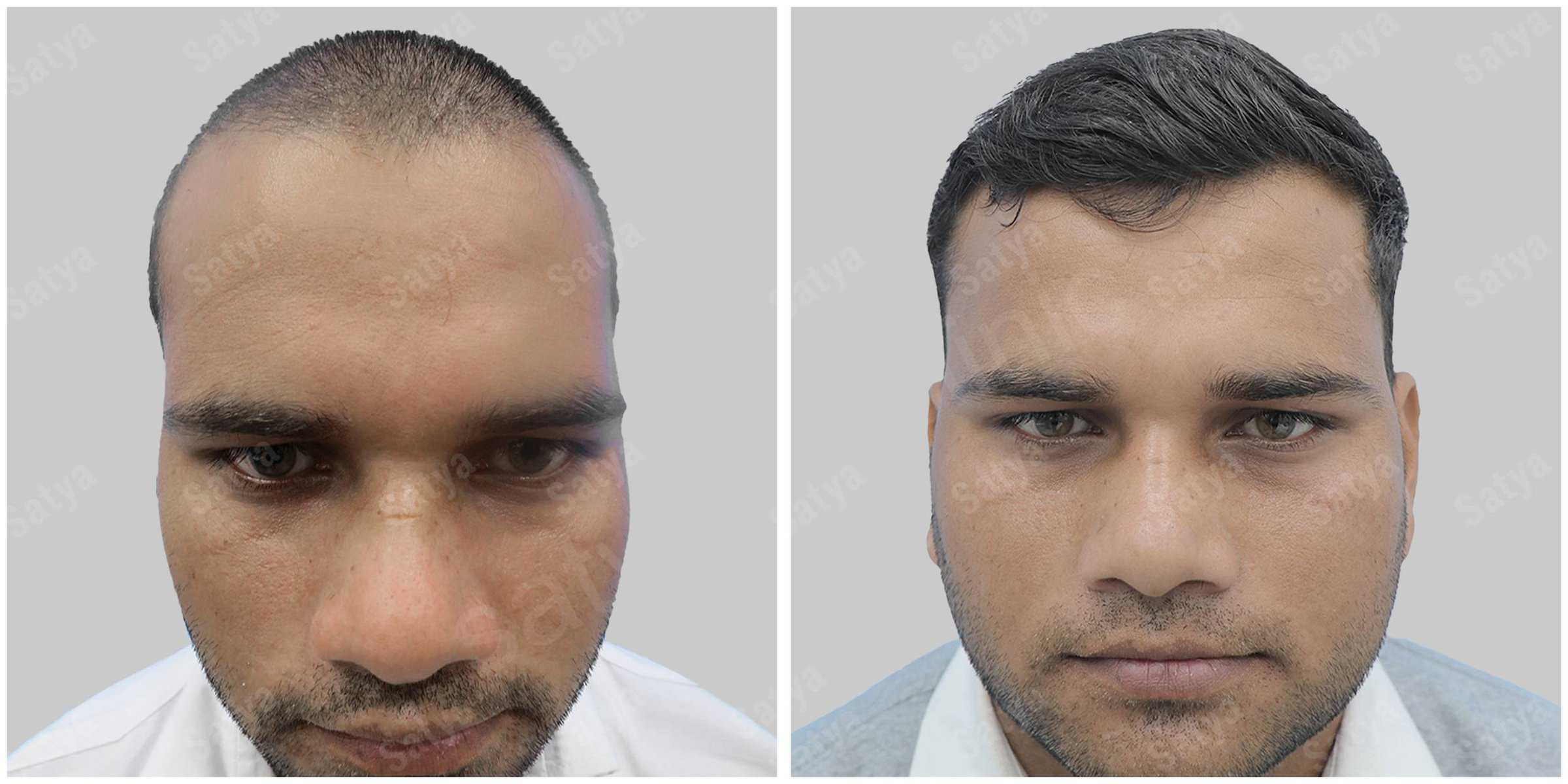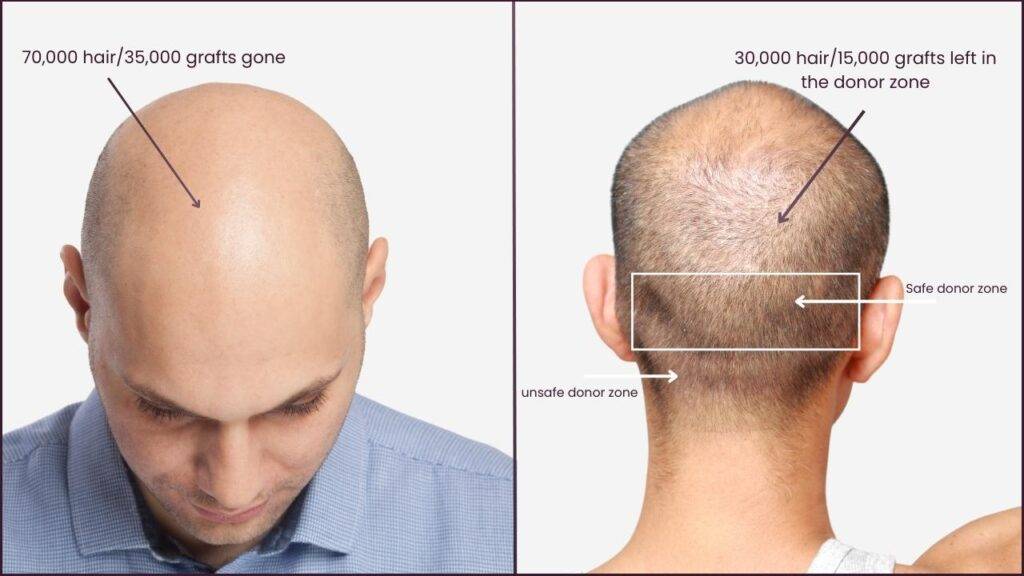
Grade 7 can not be covered logistically
Common Questions of FUE and FUT in Advanced Baldness
“Should I opt for FUE hair transplant or FUT?” “Should I start medication or not?” “Can I achieve full coverage?”
These are just a few of the common questions that arise when considering hair transplant techniques. In this blog, we aim to shed light on these questions and help you make informed decisions about the most suitable hair transplant techniques.
Before going deeper, let’s establish some fundamental knowledge. Broadly, there are two primary hair transplant techniques: FUE hair transplant (Follicular Unit Extraction) and FUT hair transplant (Follicular Unit Transplantation), each with its own set of advantages and limitations. FUE is often marketed under various acronyms like DHT, DHI, DSFT, and more.
Only finasteride result no transplant done



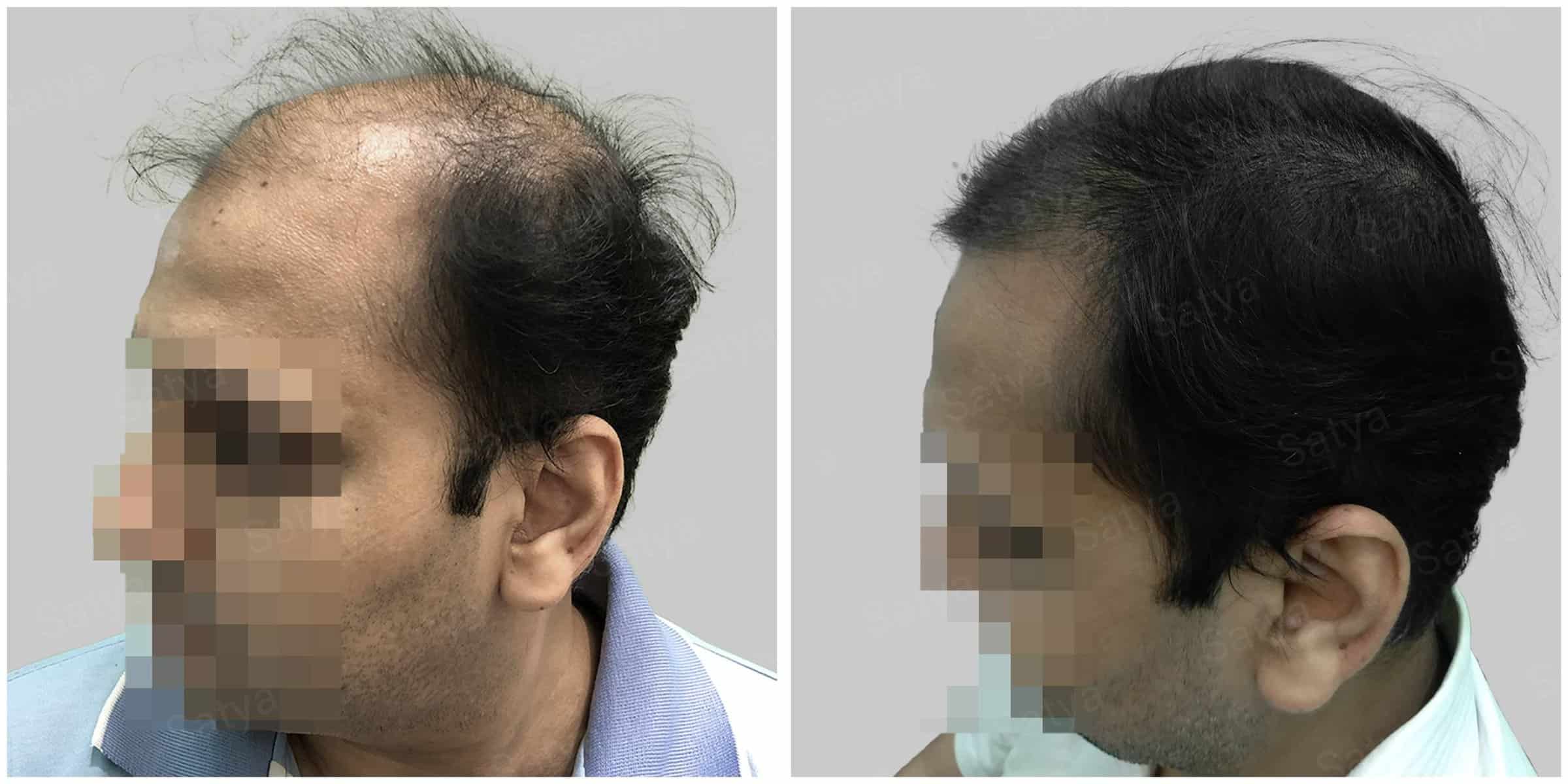
Numbers which can't be done with transplant but can be covered up with medicine (pay for skill not for medicine)
FUT is considered the gold standard and a time-tested technique, often referred to as the “Rolls Royce of hair transplants” in the realm of core hair transplant surgery. FUE, on the other hand, is a relatively newer technique that gained prominence around 2008. Despite its later introduction, FUE quickly became a favorite among many due to its ease of execution. It’s essential to note that the incapability of your doctor to perform FUT should not be a reason to deprive you of the potential benefits it offers.
Your donor area, where hair is harvested for transplantation, is incredibly valuable. We strongly urge you to entrust your donor area only to a surgeon proficient in both FUE and FUT techniques. This ensures the judicious use of your donor area without excessive depletion.



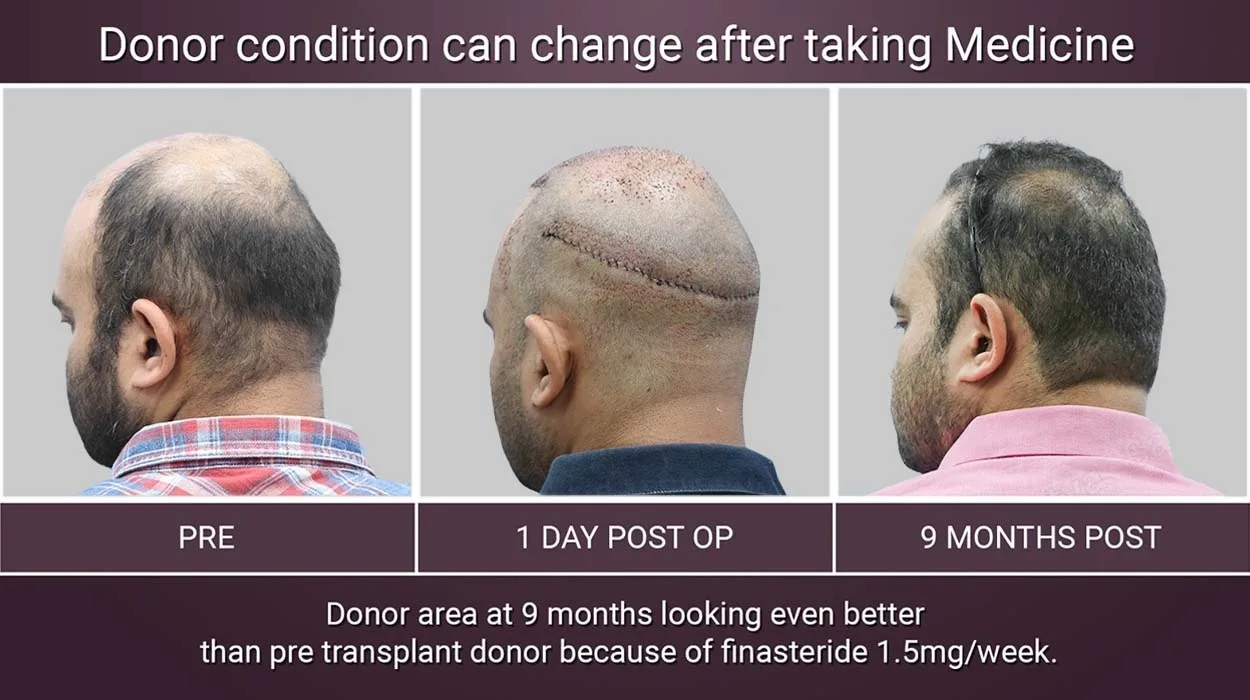

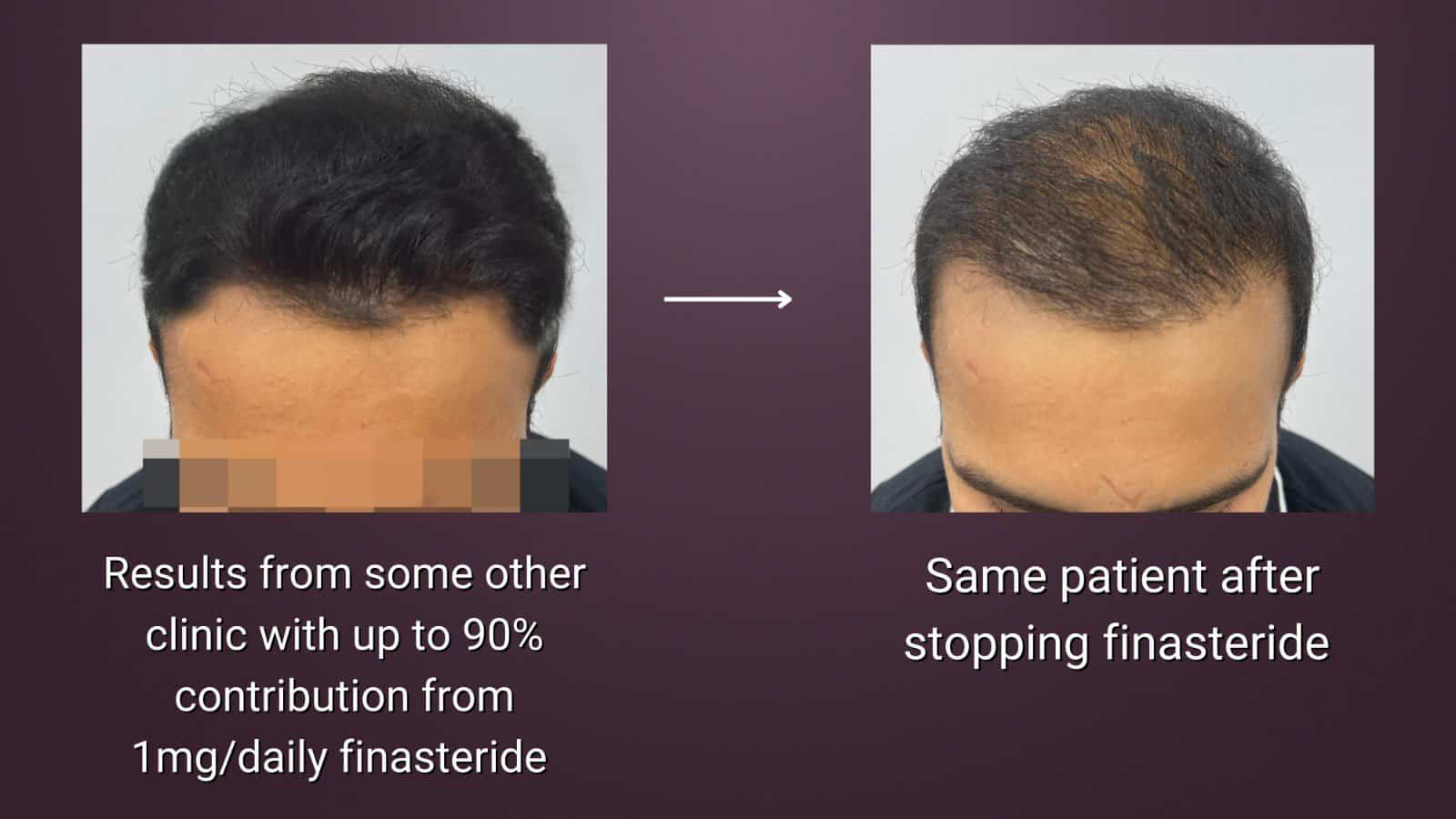

Managing Expectations in Advanced Baldness

Let Dig A Little Deeper Into The Mathematics Of Transplant
A single FUT strip can harvest approximately 2500-3000 grafts in a single session. Conversely, if we perform FUE on the same area that a FUT strip would cover, we can hope for a maximum of 1/3rd of the grafts obtained through FUT, roughly 800-1000 grafts. Therefore, combining FUT with FUE offers your doctor the flexibility to extract a substantial number of grafts from the safe donor zone while preserving sufficient donor hair for a potential second FUT strip in the future.
Conversely, if a large number of grafts are harvested via FUE alone, the surgeon may have no choice but to utilize both the safe and unsafe (with a much higher risk of thinning and fallout) donor zones. Additionally, considering donor aesthetics, FUT leaves a nearly negligible linear scar that can be effectively concealed with as few as 50-100 grafts. In contrast, a high-volume FUE procedure results in multiple small scars with narrow gaps between them, creating a more depleted appearance in the donor area.

In Conclusion
The choice of hair transplant technique should not be solely based on the surgeon’s available skills; rather, it should align with your degree of baldness, progression, expectations, and the viability of your donor area. The primary goal should always be achieving comprehensive coverage and impeccable aesthetics in both the recipient and donor areas. Since androgenetic alopecia, male pattern baldness, or genetic baldness is a progressive condition, long-term planning for hair restoration should be the focus, rather than seeking fleeting results. As Dr. Shaiil aptly puts it, “Hair transplant is a journey, not a destination. Plan it right.”

Book an appointment
Consultation

Repair

Blog

Galleries



